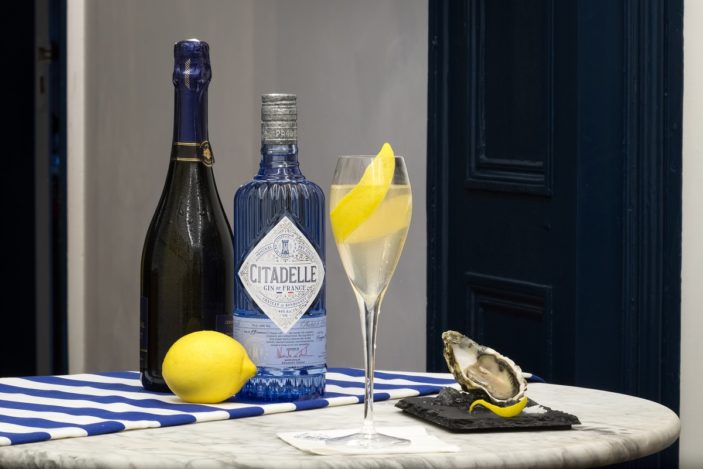
I don’t know what it is about gin, but it’s a pretty divisive spirit. Vodka is a cocktail classic, whiskey we tend to get around, but when you ask a room full of people about this robust spirit named gin, some very mixed opinions often erupt. For the superfans among us, you’ll know it’s officially gin season, because it’s spring and there’s nothing more satisfying than sipping on something fruity, floral, or piney, while still packing a punch.
If you’re new to the spirit or simply after a reintroduction ahead of ordering your next gimlet, might we bring you up to speed on its booming French counterpart in particular.
The history.
Many of France’s fine gins are produced in historic distilleries, built before a time when tours, tastings, or inhouse sipping sections were ever part of the floorplan. This classical take on alcohol remains consistent, which is what granted the renowned Cognac Region such a high level of prestige. More typically known for the plethora of wines produced in this area, gin too has its place given the appropriate environmental conditions for growing the finest crops. In fact, France’s first artisanal gin remains to be distilled inside the walls of grand French Chateau in the Cognac Region.
The flavour innovation.
French distilleries are notorious for innovation, perpetually hungry to find new and innovative flavour combinations in order to stand out from the crowd.
They have to meet the demand of more sophisticated clientele (no offence, Australia), so the spirits stemming from our Euro friends tend to showcase an extra level of elegance.
Citadelle Gin for one, is a carefully curated craft spirit that boasts an incredible total of 19 botanicals, working harmoniously together for a herbaceous finish.
Including coriander, licorice, nutmeg, and blackcurrant to name a few, this award-winning drop from the South of France does a bloody good job of transporting your taste buds there too.
Premium patents.
There are two distinct ways to add flavour to your gin, you can either add flavours to a distilled spirit or infuse them throughout the distillation process.
The full flavour profile is a reflection of whichever method you chose, though infusion seems to be the most revered approach by gin purists.
Citadelle Gin actually patented an evolution of the practice, which is why they are able to curate such a balanced serve with so many components.
Each individual botanical is infused in neutral alcohol of French wheat for different lengths of time, in order to capture the unique aromatic properties prior to all coming together atop an open flame.
Master Blender of Citadelle Gin, Alexandre Gabriel, goes on to say “ I developed this manufacturing method with the conviction that it would produce a gin of better quality. My method has been proven and after 25 years of gin research, Citadelle’s excellence is rewarded with a patent”.
Cocktail creation.
Rumour has it, the sparkling French 75 can be credited to French bartender Henry Tepe of Henry’s Bar in Paris with its creation, who named the drink ‘soixante-quinze’ after the cartridge shell of the 75-millimetre field gun used by the French army.
The gun and the drink were both said to “knock you flat”. The French may or may not be better drinkers than us, so a word warning comes with this concoction of gin, champagne, and lemon juice. A fan favourite for anyone who isn’t obsessed with tonic.
RECIPE: Citadelle Gin French 75
– 30mL simple syrup
– 30-40mL Citadelle Gin
– Champagne (any decent sparkling wine will do)
– 30mL lemon juice, freshly squeezed
Using a Champagne flute, pour 30mL of simple syrup, 30mL of lemon juice and a shot of Citadelle Gin into a glass. Top it off with the Champagne, and you’re good to go.
Tip: To make the simple syrup – which is a saturated solution of sugar and water – place equal parts (one cup each) in a pot. Taking about five minutes, bring the mixture to a boil on the stove stirring until sugar has dissolved. Remove, allow to cool and place in a sealed bottle.
